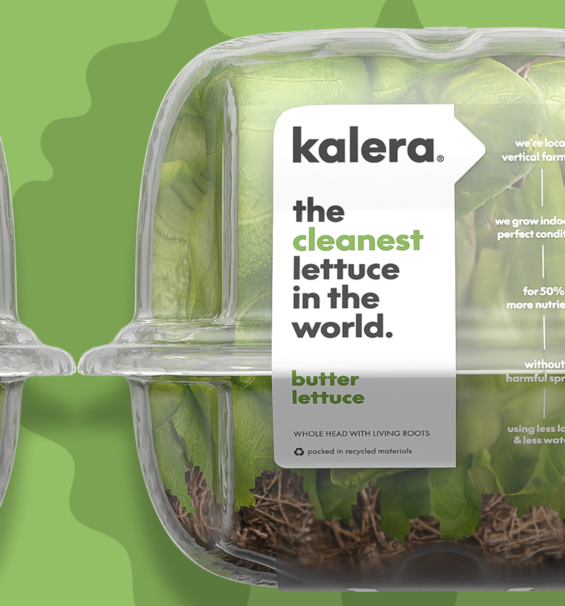Imagine standing in the produce aisle, surrounded by vibrant colors and fresh scents—what makes you reach for one piece of produce over another? It’s not just the fruit or vegetable itself; it’s the story told through the produce packaging design.
Produce packaging design isn’t just about wrapping the product; it’s an art and science that blends eye-catching visuals with functional protection. Unlike typical food packaging, it must keep products fresh while showcasing their natural appeal. The right packaging design can turn simple produce into irresistible picks, using innovative packaging materials and engaging product packaging design strategies.
In this guide, you’ll uncover the secrets behind adequate produce packaging, from standout food packaging design to game-changing techniques that drive sales and consumer loyalty.
The unique nature of produce packaging design.
Unlike snacks or beverages that rely heavily on enlarged branding and head-to-head competition, produce tells a more subtle story. Here, success isn’t just about having the most attractive label; it’s about influencing how consumers engage with fresh foods. Innovative food packaging design showcases the product and shapes behavior in ways most brands overlook.
Less direct brand competition.
Walking through the snack aisle, you’ll be bombarded with bold colors, aggressive logo designs, and brands fighting tooth and nail for attention. Now, step into the produce selection. What’s missing? The noise. You’re not choosing between eight different brands of Kiwis or a dozen types of apples, each shouting for your loyalty.
In produce, competition isn’t about one brand outmuscling another; it’s about standing out in a sea of sameness where consumers often don’t even notice the brand identity behind the product. But here’s the twist: that’s starting to change. Legacy brands invest heavily in product packaging design to carve out visibility where there used to be none. They’ve realized that it’s not just about the freshness of the fruit; it’s about how the package design communicates quality, trust, and even a little emotion.
Focus on category consideration.
The goal isn’t just to make someone pick your Kiwi brand. The real challenge is getting them to pick a Kiwi at all. Unlike packaged snacks, where consumers often have strong brand preferences, produce relies on sparking interest in the category. This is where food product marketing flips the script.
A great package design can turn a casual glance into a purchase decision. It makes someone pause, consider an unfamiliar fruit, and think, “I should try this.” Whether it’s the vibrant visuals, the clean logo design, or the innovative use of sustainable packaging materials, every element plays a role in shifting consumer habits.
Key elements that drive consumer choices in produce packaging.
Consumers make decisions in mere seconds. What influences that split-second choice? It’s not just the freshness of the fruit or the price—it’s the story told through the packaging design itself. From visual appeal to sustainability, several key elements silently guide shoppers toward one product over another. Let’s break down these critical factors that shape consumer behavior.
Visual appeal and first impressions.
First impressions matter, especially on a crowded retail shelf. Visual appeal is a powerful differentiator in fresh produce, where products look similar. One of the most effective strategies is transparent packaging. Consumers want to see what they’re buying, especially fruits and vegetables. Clear windows or fully transparent containers allow shoppers to inspect the product’s freshness, color, and quality without opening the package.
But it’s not just about visibility. Color psychology plays a significant role in influencing emotions and decisions. Bright, fresh colors like green (health, freshness), red (energy, appetite), and yellow (optimism, warmth) can subconsciously nudge shoppers toward a purchase.
On-pack messaging and purchase drivers.
In the food industry, on-pack messaging is a silent yet powerful influence. Descriptive language transforms an essential food item, “Cherries,” into an irresistible choice like “sweet burst cherries,” evoking taste and freshness. A good packaging design highlights clear value propositions, showcasing what sets the product apart, while reasons-to-believe (RTBs), such as “farm-fresh” or “pesticide-free,” build consumer trust, especially with environmentally conscious consumers.
Refining this messaging requires backward testing, where claims are evaluated independently of branding. This data-driven approach helps fine-tune the brand strategy for maximum impact. A professional designer uses tools like a dieline template, incorporating thoughtful illustrations and lessons from other sectors, like coffee packaging, to create messaging that resonates at first glance.
Functionality and freshness.
A visually appealing food package design must also protect the product inside. A balance between aesthetics and functionality ensures fresh produce remains undamaged and fresh throughout transport and storage. This is why packaging designers focus on product design that looks attractive on a retail shelf and offers durability.
For example, plastic packaging is often used for its protective qualities, but brands are now exploring alternatives that reduce packaging waste while still safeguarding the product. A well-executed packaging design process considers both form and function—ensuring that a beautiful package doesn’t compromise the quality of the food inside.
Sustainability as a consumer motivator.
Consumers are actively seeking sustainable packaging solutions. Environmentally conscious consumers prefer recyclable, compostable, or biodegradable options over traditional plastic packaging. But, meeting sustainability demands isn’t as simple as removing plastic—it requires a thoughtful product design approach.
Brands must balance packaging material innovation with performance. While some sustainable packaging alternatives, like cardboard trays or bio-based plastics, are gaining traction, they don’t always match plastic’s durability or ability to preserve fresh produce. Real-world trials have shown that some eco-friendly solutions reduce packaging waste but may compromise product protection, leading to higher food waste.
Convenience factors.
Features like resealable designs help maintain freshness after opening, while portion-controlled packaging appeals to on-the-go shoppers who want quick, healthy snacks. Innovative packaging allows consumers to trace product origins, check freshness indicators, and even access recipes with a simple scan.
These innovations enhance user experience and strengthen brand trust. By integrating functionality, sustainability, and convenience, designers can create great packaging that satisfies consumer preferences and retailer demands.
The psychology behind consumer choices in produce.
Emotional triggers play a key role. Attractive packaging emphasizes health, freshness, and sustainability, appealing to shoppers looking for quality and eco-conscious choices. Meanwhile, cognitive shortcuts simplify decision-making. A clean, bold, and innovative packaging design reduces confusion, making products easier to choose on a crowded store shelf.
Consumers are likelier to pick produce with clear messaging and visuals that stand out effortlessly. Finally, trust and transparency are essential. A strong brand strategy includes honest labeling, minimal clutter, and thoughtful design. Shoppers trust brands that work with a skilled graphic designer to create authentic packaging, reinforcing their confidence in the product’s quality.
Common mistakes in produce packaging design (and how to avoid them)
The following are some of the most common mistakes that brands make in produce packaging design:
Overcomplicating with too much information.
Consumers make split-second decisions at the store shelf. They’ll move on if your packaging design overwhelms them with excessive text, cluttered graphics, or conflicting claims. The best approach? Keep it simple. Focus on key benefits using clear, concise messaging. A skilled graphic designer ensures a clean layout, making the most important details stand out.
Ignoring sustainability trends or using ineffective eco-materials.
Some brands overlook consumer demand or use eco-materials that fail in real-world applications. Weak, non-durable materials can damage produce, ultimately increasing waste. The solution? Invest in innovative packaging design that balances sustainability with durability—think recyclable films, compostable trays, or minimal packaging waste without sacrificing protection.
Underestimating consistent branding.
A scattered brand strategy confuses consumers. If one product has sleek, attractive packaging while another looks outdated, shoppers may question quality. Consistency builds recognition and trust across all store shelf offerings. A cohesive, innovative packaging design strengthens identity and increases long-term loyalty.
Actionable strategies for effective produce packaging design.
Here are some of the most recommended strategies from SmashBrand for effective produce packaging design:
Data-driven design decisions
Successful modern packaging design relies on real consumer insights, not guesswork. Before a full-scale rollout, brands should test how shoppers react to different snack packaging design options. Feedback-driven iterations help refine visuals, messaging, and functionality, ensuring the final product resonates with buyers and stands out on shelves.
Integrating branding with packaging
A strong brand identity is essential for building recognition and trust. Consistency in colors, fonts, and messaging across all products creates familiarity. Whether designing for luxury packaging design or everyday items, cohesive branding turns packaging into a powerful marketing tool, making produce instantly recognizable.
Adapting to retailer requirements
Retailers have specific expectations for product packaging, from size constraints to sustainability goals. Brands must balance these demands while maintaining their unique modern packaging design aesthetic. Meeting retailer requirements without sacrificing branding ensures visibility and compliance while preserving the brand’s core identity.
Elevating produce packaging for consumer impact.
- Produce packaging design is unique—unlike center-store products, it focuses more on category consideration than direct brand competition.
- Brand differentiation is becoming essential—legacy brands like Driscoll’s are investing in branding and packaging to stand out.
- On-pack messaging is crucial—descriptive language and clear value propositions drive consumer interest and trial.
- Consumer behavior in produce is different—it’s not just about brand preference; it’s about increasing category penetration.
- Data-driven packaging decisions are key—backward testing helps refine messaging and identify the most compelling claims.
- Sustainability is a growing priority, but eco-friendly materials must still meet functionality and durability requirements.
- Retailers influence packaging trends, demanding sustainable solutions while ensuring they perform well in the market.
- Convenience features matter—resealable packaging, portion control, and smart labels enhance the consumer experience.
- Produce brands should optimize their packaging design to attract attention and encourage repeat purchases.
Subscribe to
Nice Package.
A monthly newsletter that unpacks a critical topic in the FMCG & CPG industry.
Free Resource.

CPG product repositioning guide.
Explore the five undeniable signs your CPG product needs repositioning along with strategies for leveraging consumer insights for a guaranteed market lift.
Learn More About CPG product repositioning guide.
